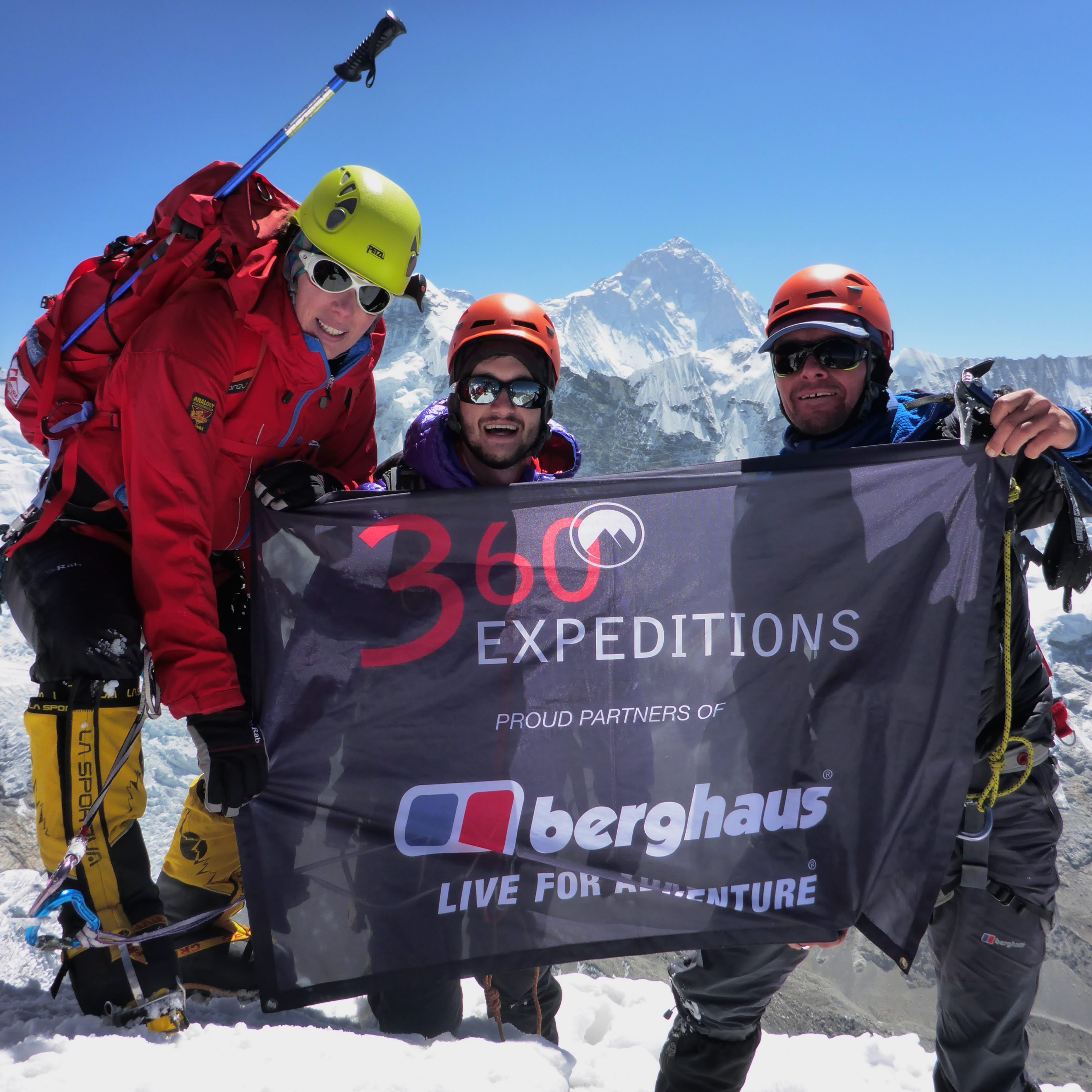You may have already climbed Kilimanjaro or trekked to Everest Base Camp and want to know ‘what’s next?’
‘I want to go higher but don’t have the skills’, is a comment we hear often. ‘That’s okay’, we say, ‘we will teach you’. ‘I’m not sure I’m capable’ if even more often said. ‘If you don’t try you will never know’ we will reply with a little twinkle in our eye. Everyone starts at ground zero, it’s up to you what happens next.
“‘Wow – Everest – I’d love to go but….’ I found it difficult to hear people crush their dreams with the word ‘but.’’ A quote from Junko Tabei, a Japanese climber and the first female to summit Everest back in 1975, from her book ‘Honouring High Places’ which is well worth a read, and she is quite right too.
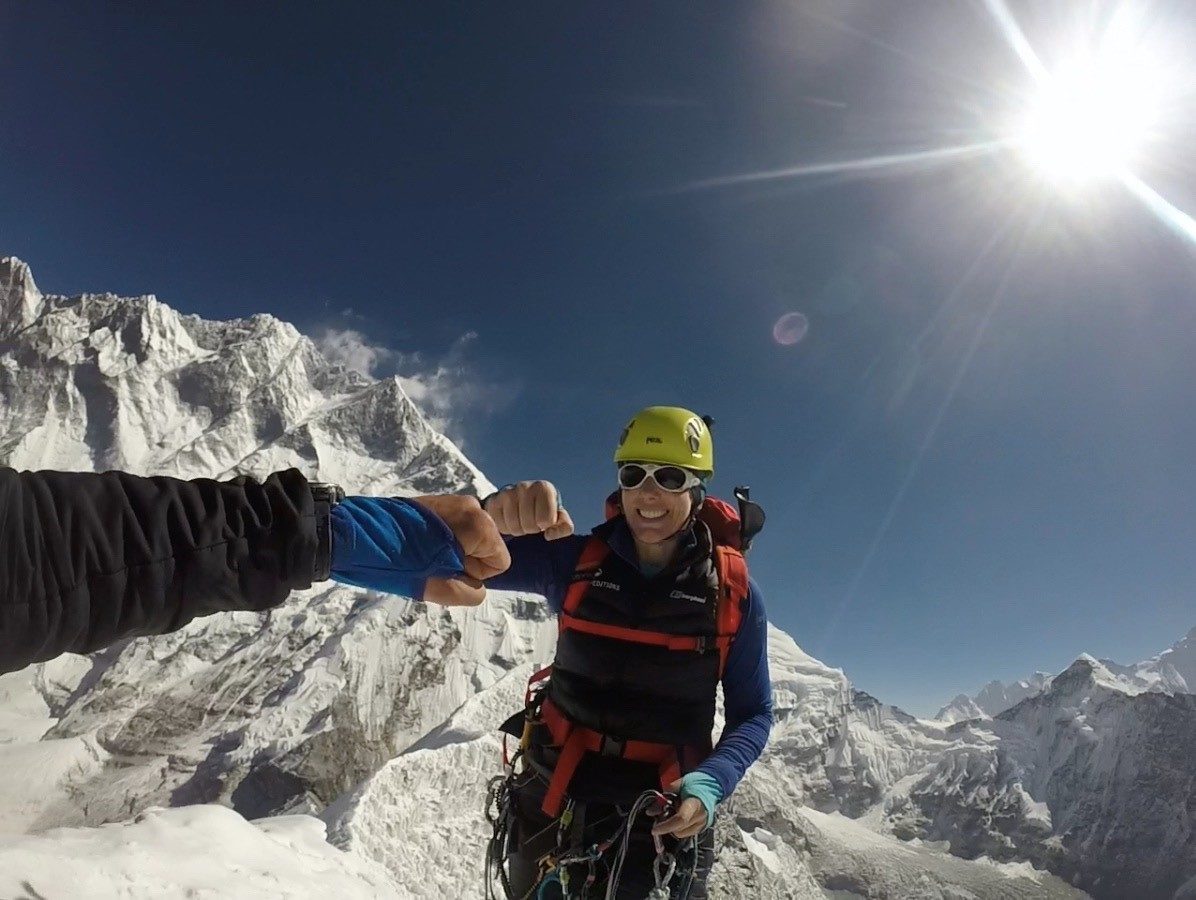
My first 6000er was Mera Peak and this beautiful peak holds a very special place in my mountaineering heart. I was turning 40 in 2011 and wanted to do something different to mark it. I had been leading trips for 3 years by then and had led a few expeditions on Kilimanjaro and had trekked to Everest Base Camp as Rolfe’s assistant leader in 2010. I had wanted to do a horse trek instead of climbing another mountain, an old busman’s holiday, but mainly because I didn’t think I was capable of going higher than Kili or heading onto the white stuff. I talked to Rolfe about it and in his very easy style he said ‘If you don’t give it a go you will never know!‘ I signed up at the back end of 2010 and we climbed as a team of 9 in April 2011. It has since led to bigger things but Mera Peak was the start of changing my mindset from ‘Can I?’ to ‘I can!’
On our expedition our summit was at 6275m due to weather conditions on the mountain and as we know, no summit is guaranteed – but that summit was part of an incredible expedition with great team mates and I learned a huge amount about my capabilities and my perceived limits.
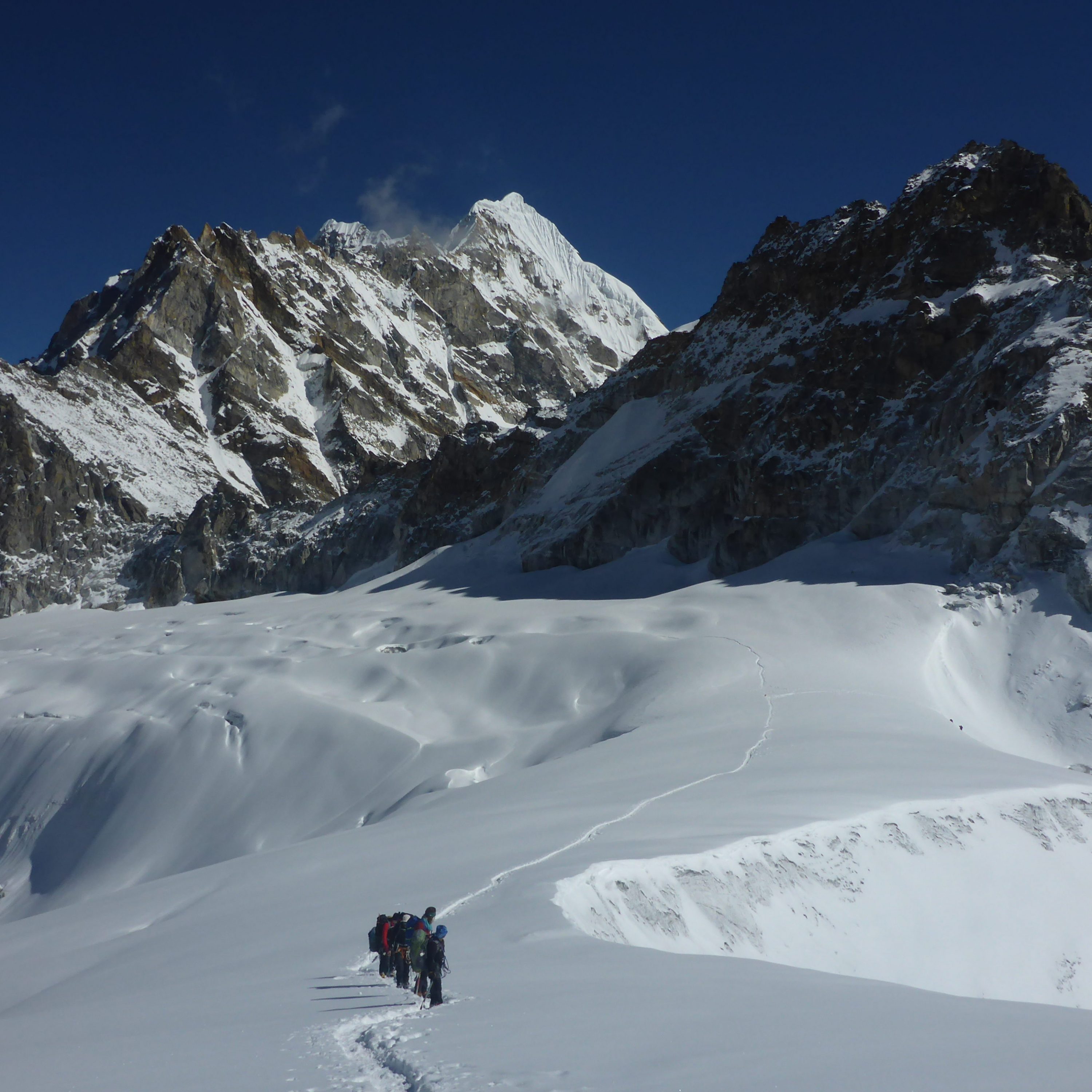
Which one?
A great place to start is in Nepal. There are many 6000ers around the world but the ones most often climbed as a dip in the ocean of high altitude are in Nepal and mainly in or around the Khumbu Valley, with Everest watching over you and putting further thoughts in your mind, enticing you to think…maybe, just maybe, one day.
The most popular of the highest trekking peaks are Mera Peak (6476m at its highest point, however everyone climbs the Central Peak at 6461m due to better accessibility), Island Peak (6189m) and Lobuche East (6119m). Each has its own challenges, beauties and difficulties but all are eminently achievable with a lot of the right training, good kit, a great attitude and a sprinkling of good fortune. Don’t be fooled by the differences in height. What one gains in height, the others will add a different element and sometimes a more challenging summit day.
Here are a few pointers to get you started for which ever 6000er you choose and in whichever country. A general overview with some good tips on making your trip of a lifetime the start of a long term love affair with high altitude and the amazing mountains we call our playground and where we love to work.
Choose your provider wisely
First things first, do a lot of research about the company you want to take up to great heights, if you don’t already have a particular company in mind. We are blessed these days with having a huge amount of information at our fingertips. Whether you are booking locally in country or using a UK based expedition company, check out several and research not only their prices but also what is, and more importantly what is not included. The ‘not included’ section can add up to more than you think or are prepared to spend. Are flights in the package, are hot drinks included, is food an extra simply so that you can choose what you want to eat (which you can do with 360 and it is already included).
However, it’s not just the price that matters. If booking with a UK company, how long have they been working with their in-country agent for, do they have a good relationship with them, do they look after the local crew well? What happens if things don’t go according to plan, are you left in the lurch or do they go to great lengths to sort things out? What support do you get beforehand, what’s behind the sparkly website in terms of experienced contacts and who are the leaders? Do they know their stuff? What info is there on kit, equipment, itinerary and so on.
Get advice from others who have been there and climbed the peak of your choice. Everyone will have their own favourites as well as those to avoid. Everyone who has climbed a 6000er has an opinion, quite rightly so too, of who to go with and what to look out for. Don’t be shy in phoning a company or two and chatting through the expedition with them. You’ll get a feel as to whether you are simply a number on their books or to become a valued client and friend.
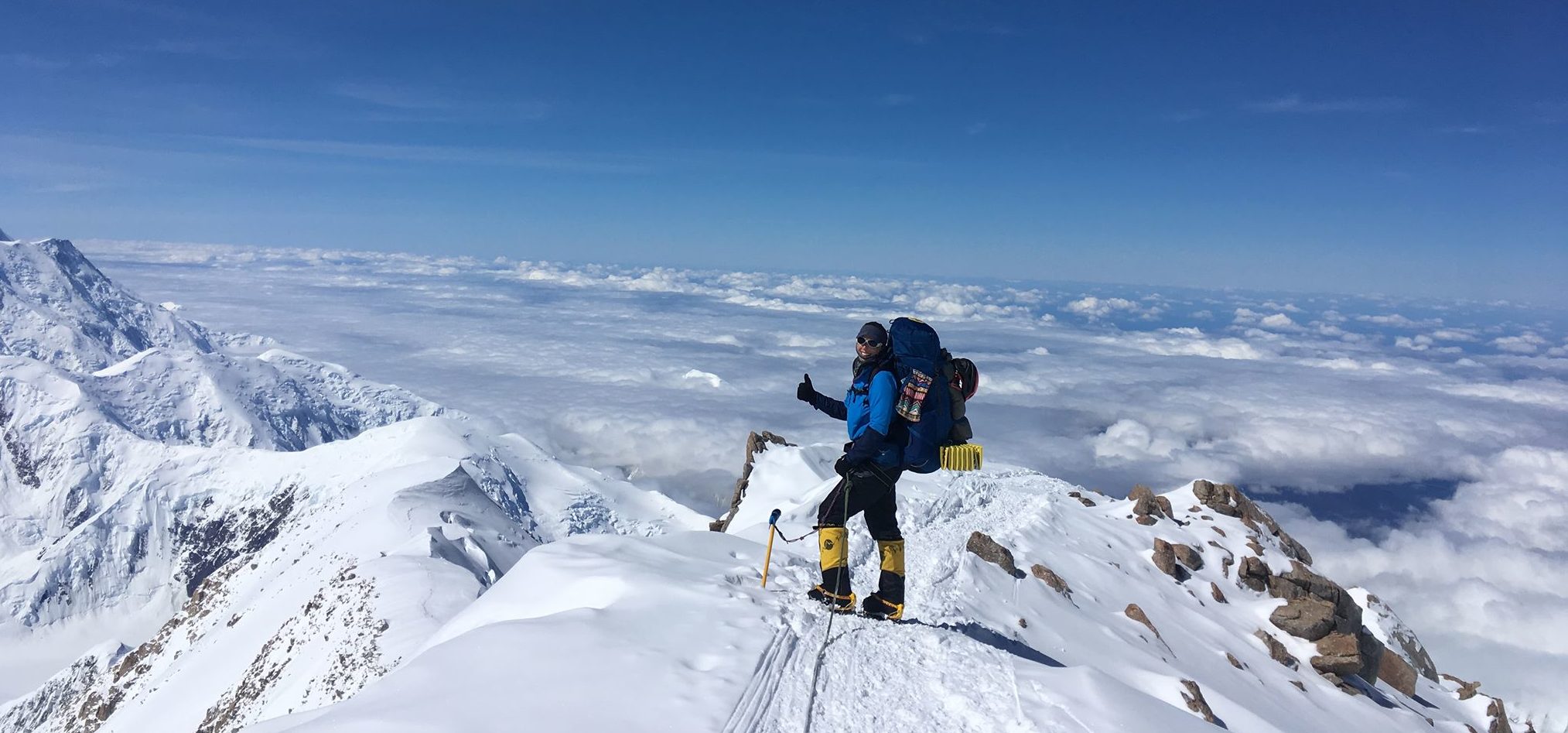
Don’t worry about the altitude, concentrate on your attitude
I can’t say this enough, it’s all about your attitude rather than the altitude. Many clients come on expeditions in a mild (or more) state of anxiety due to the expansion of their comfort zones, the fear of the unknown, the fact that they are not in charge as well as the ‘I must summit’ thoughts (see later in the blog about that one!) This can manifest itself in many ways – from being quieter or louder than usual and getting tense about a variety of ‘stuff’ that wouldn’t usually bother you.
You will be sharing your adventure of a lifetime with a number of other people who are also having their adventure of a lifetime too – you are all in this together. You are in competition with no one, not even yourself. So go with the flow, don’t sweat the small stuff, don’t make a drama out of something trivial, listen and learn from your leaders, get to know your Sherpas, local guides and crew and enjoy each day with its own merits. The summit will come soon enough.
Being honest is paramount too. Altitude can kick your arse if you do not treat it with respect. Altitude does not care if you are the fittest, have the best kit, how much money you earn, what your job is, whether you have done more than anyone else in the gym, what age you are or your gender. Try to ‘beat it’ at your peril. Walk slowly, drink plenty, rest well, eat as much as you can when you can and have a relaxed mindset. It’s not rocket science, honesty really is the best policy!
Everyone will have a bad day or two, three or four. Don’t worry, it’s normal. Don’t beat yourself up about it as it’s how you deal with those bad days that count, putting right the things that have not been great, chalking it up to experience and asking for help when you need it.
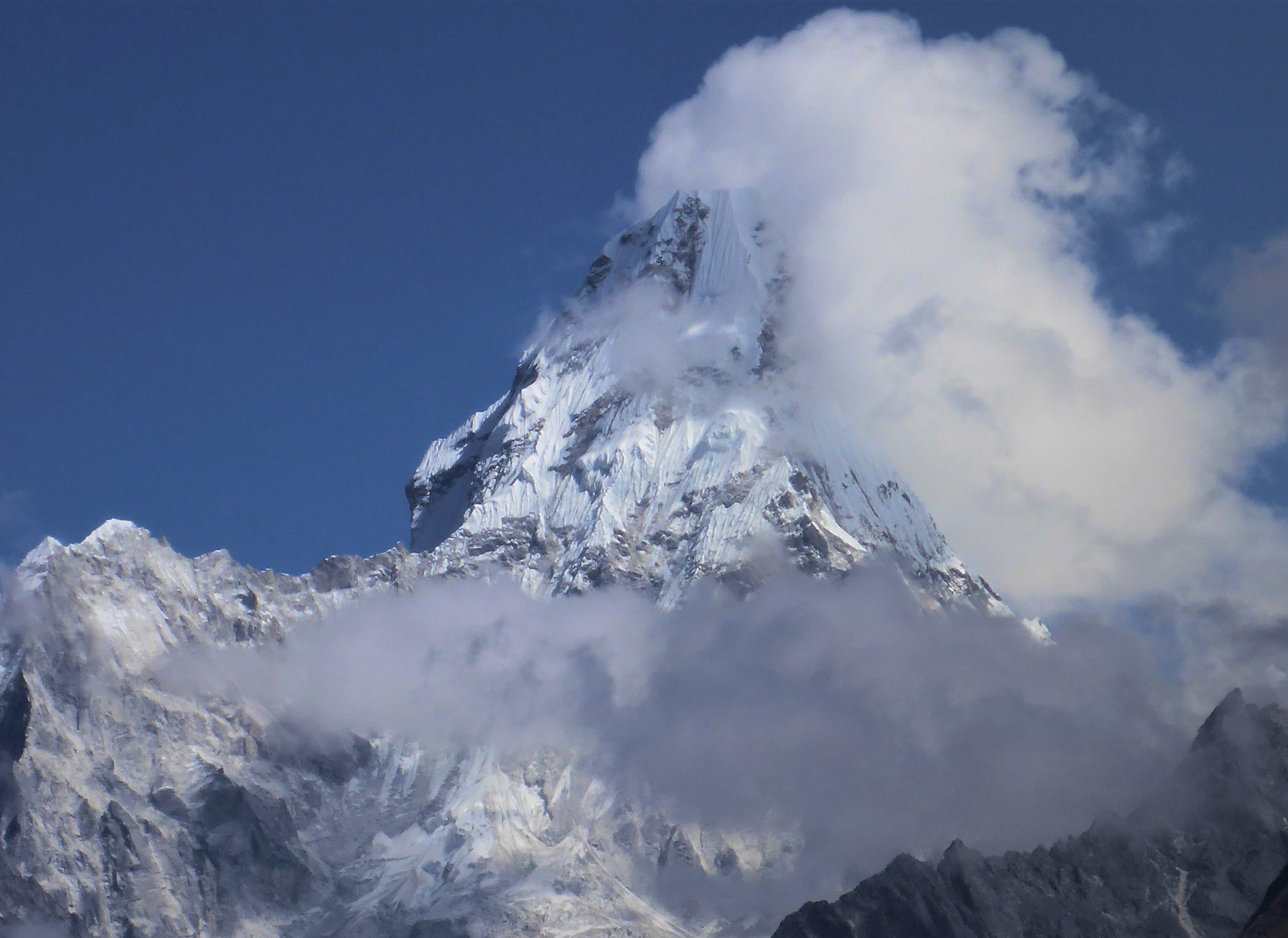
Be mountain fit, not gym fit
Being physically fit means that you are also more mentally prepared. Knowing that you’ve put in the effort beforehand will go a long way to ease your mind whilst on the mountain. I’m sure you’d rather head off to your 6000er safe in the knowledge that you’ve put in every effort you can, rather than worrying that you ought to have done more.
However – and this is a big however – in our busy lives we need to put in the effort to get fit in the right way before any trip or expedition. Basically, train to type. If you are walking a long way, then get walking. If you are going on a cycle challenge, then get on your bike. If you are going to climb a mountain, find some hills (or mountains!) and get your body used to that environment.
Yes, the gym absolutely has its uses but so does the outdoors where you get a free workout too. I went to a trainer twice a week before Everest when I was home from expeditions (which wasn’t very often) to get my body into better shape strength wise. It helped me a huge amount, not only on the Big E but also for my work leading expeditions. However, when I was home I also put on my walking boots, got my pack out and set about keeping up my fitness in the hills. I live in the flat lands of Salisbury so I had to work smart as well as hard. When I wasn’t able to get out to the mountains I used a steep 50m hill not far from my house, and I went up and down it, a lot – much to the amusement of other dog walkers and probably my dogs too!
If you put down a fairly sizable amount of money to do your trip of a lifetime then you owe it to yourself and your team mates to be in the best possible shape. Spend more time and energy on your fitness than searching for new sparkly kit. Your fitness is vitally important.
Most companies who offer up 6000ers to clients (as well as any expedition) will also give you a training plan. Each plan can to be adapted to suit your life / work / home commitments but above all, get out into the hills and get training!
It’s not a race or a competition
I’ve alluded to this above and it is so true. Everyone deals with the rigours of life on expedition differently. Some will cruise through looking as if they are not struggling at all, whilst others will find some days harder than they thought. But remember, you are in it for the long haul, it is not a sprint.
When I was a client getting my first couple of 6000ers under my belt I did have many a bad day, but I made sure I didn’t compare myself to anyone else as we are all made differently – mentally and physically. I am most definitely in the long slow burn category of trekkers and happiest towards the back where there is more space.
Having a relaxed mindset helps so much. Being stuck at the front, right behind the guide who is setting the ever-slowing pace but wishing he was going faster and pushing the minutes in breaks will not help your chances. It can actually be detrimental to your success. Being out on the trail, taking in the scenery, enjoying the culture, getting to know your team and letting your body slowly and naturally acclimatise is the best way forward. You will benefit more from being the tortoise rather than the hare.
Eat, drink, walk, rest, repeat
Food is fuel, and water is the best medicine at altitude. Your body will not run for long if it is not fuelled properly. Remember that you will be burning many more calories just sitting in your tea house at 4500m than you would sitting on your sofa at sea level, let alone walking towards your next stop at altitude. So you need to replenish what you are using as much as you can. Your appetite is likely to diminish the higher you go but don’t worry, it’s normal. Eating a tonne of carbs may not be your idea of a healthy diet at home and living on beige food may not delight you but it is best for altitude. Smashing a whole tube of Pringles at home would horrify me but at altitude every calorie counts!
Bring snacks with you that you know you are going to love eating, particularly for your summit night or day, even if you have lost your appetite and are feeling a little nauseous. Nausea is often caused by being hungry as you bypass the hunger pangs and go straight to feeling sick. Suck on a sweet, have a nibble on a Mars bar, pop a Jelly Baby in your mouth and you will soon perk up. Bring a variety of fast and slow acting energy foods and definitely not low calorie or pure protein bars. You need all the calories you can get and, trust me, you will not enjoy the protein only bars at altitude! Also remember that many treats will freeze higher up, so chop them up into bite sized chunks to save your teeth!
Hydration, hydration, hydration. I won’t go into too much detail about this other than the fact that water is the best medicine. You will be peeing like a pony and will probably be drinking more water than you have in your lifetime (all in moderation of course!) but it’s a vitally important part of your acclimatising to the altitude. On the flip side of drinking plenty of water, bring a pee bottle or two on expedition with you too!
I’ve talked about walking at a slow pace and a good mindset above but just to reiterate that rest is as important as walking to help you acclimatise to the more rarefied air. If you have a good acclimatisation programme set by your expedition company, as we do at 360, you’ll have plenty of down time. A Doctor I once worked with called it Passive Acclimatisation and I’m all in favour of a good rest, a mid-afternoon nap or just sitting and chilling in a tea house or mess tent playing cards and catching up on the news of the day. Doing nothing is actually good for you!
Nothing is guaranteed
No summit is guaranteed and pinning the whole expedition on one moment is not a healthy way to view a 3 week long trip. There are many factors that can get in the way of you reaching the true summit, with you reaching your summit instead. The weather can have a huge impact on an expedition and a flexible attitude will help massively when planning and re-planning due to the weather not playing ball. Illness, injury or you just deciding enough is enough can also be factors.
In life we all talk about ‘the journey’ rather than the destination and this is so true on expedition as well. On a recent Stok Kangri expedition, we changed route plan even before we left the UK and then gently slid down the Planning Alphabet scale when bad weather hit us at the end of Day 1, causing havoc with our Plan B route. Eventually we could not summit the mountain as there was too much snow and so with Plan G in place, we reached our highest point of 5050m on a neighbouring peak overlooking our long wished for goal of 6153m. My team took the changes incredibly well and I kept them informed with any changes of plans as often as I could. They were a testament to their own great attitudes and we all came away from that expedition with bigger stories and greater memories than we probably would have done if everything had gone according to plan. Has it put any of them off? Definitely not!
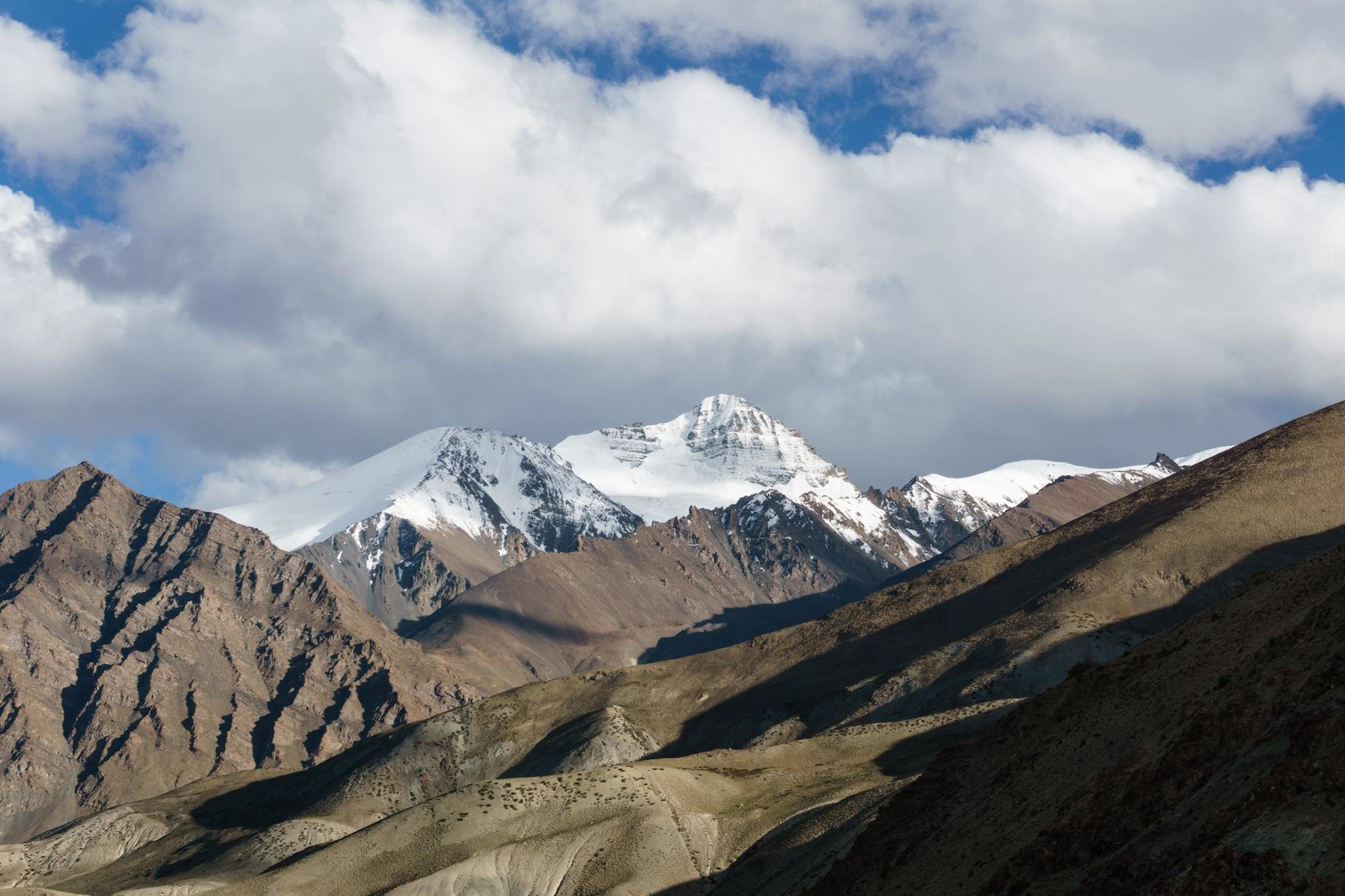
You don’t need to break the bank by getting the latest kit
Good kit is vitally important, but you really don’t need to get yourself into debt by spending a fortune. Some trips can be a fashion show of who has the latest and the lightest equipment at vast expense. When I climbed Mera Peak for the first time I had a 4th or 5th hand pair of good quality plastic boots, a borrowed harness which I knew was safe, my down jacket was bought from eBay for half the original price and I survived with all fingers and toes attached despite not having the newest kit. Since then I’ve gradually upgraded my equipment when funds and the opportunity has arisen – by buying good quality 2nd hand kit or purchased new in the sales. It has saved me an absolute fortune whilst still keeping me warm and safe in the coldest of conditions.
There are many gear exchange groups on Facebook or on the internet, so it is worth seeing what is out there or putting up a post asking if anyone has what you need hidden in their kit cupboards.
At 360, we set the kit list with essentials as well as additional bits of kit that are optional, depending on whether you have enough spare kgs in the set luggage allowance for the flight into Lukla. Making sensible choices are key. You really can wear one pair of pants for multiple days and you only need 2 wet wipes a day, if that. You also won’t need a whole new bottle of sun scream, a 50ml one will do, or a whole large tube of toothpaste as a travel sized one will get you through. I certainly keep a clean pair of socks for the summit day but apart from that, everything has a multi-use. My down jacket is my pillow and clothing can be worn for many days at a time and it will still work well. We are all going to smell by the end anyway!
There is definitely one bit of kit which is vital to get right and that’s your altitude boots. Too tight and your feet will get cold meaning either an early turn around, which is mostly avoidable depending on conditions, or frost bite which is most definitely avoidable. You need plenty of toe wiggle room with either one or two pairs of good mountaineering socks so make sure you go at least a size bigger or more. Try on a variety of brands and try them on with warm feet which tend to be slightly larger than when you just get out of bed in the morning (as feet sometimes swell at altitude). Ultimately buy the best you can afford or go for rentals instead.
Coming home with all of your fingers and toes attached and wiggling is not optional!
Take responsibility for your own actions
Hygiene is King on any expedition. Washing your hands after the toilet with water if available and then hand sanitiser can help prevent bugs going around the group and make everyone’s trip a success. Walking around camp or the tea house with your shoe laces tucked into your boots or tied up can also help on the bug side of things. If they trail around behind you, Lord knows what germs you’ll pick up on them, I’ll say no more.
Look after your own kit too. Heading back a kilometre or two for a piece of equipment that has been left behind can have an impact on the whole group.
Keep some energy for the way down and the way back too. When people reach the summit, or their summit, they generally go ‘whoohoo we’ve made it!’ and forget that the summit is only half way. You must make sure that you eat enough going up and as well as coming down to keep that energy going and to keep your brain fully functioning too. Most accidents happen on the way down, best not to be one of the statistics.
If in doubt ask, but above all, be honest and have fun!
Your leaders, guides, the Sherpa team and those manning the office back in the UK are all there to support a successful expedition, whatever that may look like and we have your best interests at heart. We are there to answer your questions, no matter how stupid you may think they are. We are there to give you a kick up the backside when needed as well as a hug, virtual or real, when that is also called for. Climbing at altitude often requires a somewhat Tough Love approach from yourself and us as your leaders, but we will most definitely laugh a lot and seeing your confidence and knowledge grow throughout the expedition is a real buzz for us. Who knows what is next!
